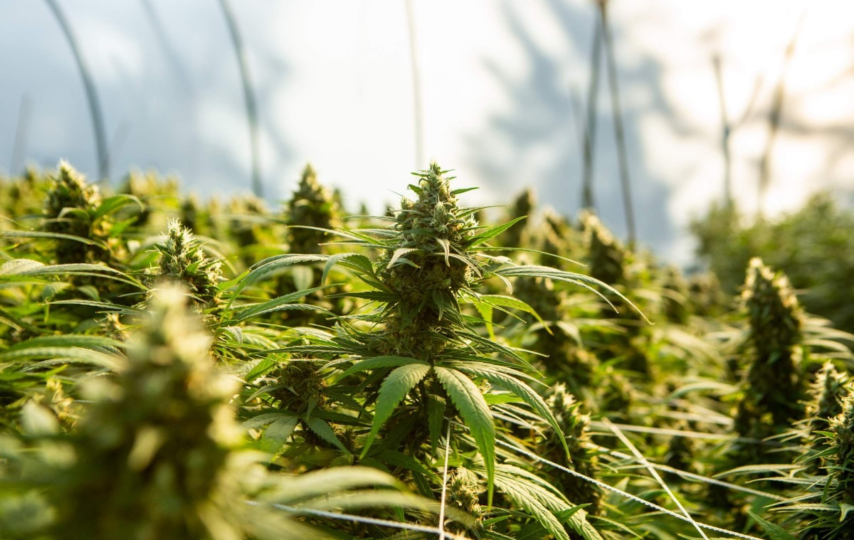Blue Dream, often known as Blueberry Haze or Azure Haze, is a popular strain on the West Coast of the United States. This strain is well-known among recreational and medicinal cannabis users for its strength and adaptability. This cultivar is also popular among producers, with a reasonably good production even in outdoor environments. Blue Dream is known to exhibit “couch-lock” effects at large dosages, despite its Sativa roots.
General information and ancestry
Blue Dream is a crossbreed between Blueberry and either Haze or Super Silver Haze, depending on who you believe. Its roots are in California’s Emerald Triangle. Blueberry is somewhat of a marijuana celebrity, having won the High Times Cannabis Cup for Best Indica in 2000. It’s well-known for its sedative properties and euphoric high. On the other hand, Haze strains are known for their uplifting, energizing effects. The combination of soothing and uplifting effects typically described in Blue Dream might be due to its mixed background. At the same time, the study suggests it’s more likely due to its terpene composition.
Also Visit: Sea moss: 7 Surprising Ways It’s Beneficial For Your Health
While there are no definitive tales of its origins, internet sources claim it first arose in the Santa Cruz region in the early 1970s. DJ Short, a famed cannabis breeder, discovered the cultivar in recent years and reworked it into the variety that is now widely available in the United States. The strain has been popular among patients since the mid-90s when medical marijuana shops first opened their doors in California. This strain combines Thai, Colombian, Indian, and Mexican genetics in a genuine display of cannabis diversity.
Blue Dream’s cannabinoids and terpenes
Blue Dream and other cannabis types are sometimes referred to as strains or cultivars, although the more precise name is “chemovars.” The cultivar is an acronym for “cultivated variation,” which refers to bacteria and viruses that have been purposely generated or chosen and maintained via culture.
However, botanical characteristics like height, form, and color make it almost difficult to determine a cultivar’s impact (uplifting, sedating, etc.). Chemovars are “chemical varieties” that are determined by their chemical profiles. In a nutshell, this phrase refers to using chemical makers like cannabinoids and terrenes to differentiate between cultivars.
Also Visit: Investing For The Future Is Smart. Here’s How Wealthy Families Do It
It’s difficult to talk about a cannabis variety’s chemical composition. From a chemical standpoint, there is no standard definition for Blue Dream — or any other strain. In principle, every producer may develop any cannabis strain with any chemical profile and give it whatever name they choose. As a result, determining the THC, CBD, or CBG level of Blue Dream is challenging.
The following data might give you an idea of what you could discover in Blue Dream chemovar. Still, your best strategy is to always search for a certificate of analysis before purchasing a cannabis product to know what’s in it.
What effect does Blue Dream have on you?
While various strains have varying effects on individuals, there seems to be agreement on Blue Dream’s soothing and uplifting effects. It is understandable given its ancestors: Blueberry is a sedating, traditional Indica strain, but Haze, and most Haze variants, are recognized for their buzzy, cerebral effects.
Also Visit: The ETON Elite Radio Clearly The Best Choice For Travelers
A word of clarity is important with all this discussion of India and Sativa. Sativa strains and the cannabinoid delta 8 are said to deliver an energizing and intellectual high, while Indica strains provide a calming full-body “high.” Despite this deeply ingrained assumption in mainstream cannabis culture, there is no scientific proof to back up this claim. In reality, research shows that various elements influence whether a strain produces certain effects and whether the plant is native or India has little to no bearing.
The people’s experience is significantly more important while being less empirical and far more subjective. According to Kyle Kushman, an award-winning cannabis farmer featured in the Netflix mini-documentary, “When someone labels anything like 70 percent Sativa, 70 percent, it’s 100 percent subjective,” says Weed. It’s done by someone smoking it and determining if it gives them an indica or Sativa effect.”
Blue Dream is an excellent illustration of cannabis’ biphasic effects, in which low and high dosages have opposing effects. Blue Dream is frequently uplifting and invigorating at low dosages, but patients report powerful sedative effects at greater levels, according to Michael Backes’ Cannabis Pharmacy. Because of its flexibility it may be used to treat pain, nausea, and sleeplessness with the proper dose. It’s also acclaimed for its ability to alleviate gastrointestinal problems.
Must Visit: Bookkeepers And Their Importance In A Small Business
While some marijuana users claim that it helps them relax for a good night’s sleep, most people take it throughout the day. Due to its flexibility, it has been continuously accessible in California and other West Coast dispensaries since the early 2000s.
Medical problems
Blue Dream is an excellent alternative for pain relief throughout the day because of its well-balanced effects, providing muscular relaxation and analgesia without being excessively tired. According to Cannabis Pharmacy, this strain may help with muscle spasms and stiffness associated with multiple sclerosis.
Effects, both positive and negative
This strain is widely regarded as a daytime and nocturnal strain, with long-lasting body and head effects. At modest dosages, it’s known to be relaxing and uplifting, with many users reporting spurts of creativity. In terms of side effects, the most prevalent complaints are dry mouth and eyes, with paranoia, dizziness, and anxiety being less common.
Growing Instructions for Blue Dream
Blue Dream is a horticulturist’s dream, perfect for beginners and expert growers. After 55-70 days, it blooms nicely inside or outdoors. The best time to harvest it for outdoor growing in the northern hemisphere is around mid-October.
This cultivar does well in various conditions, including cold temperatures. The plants are quite tall, reaching up to 150 inches in certain cases (approximately four meters). When it comes to cannabis cultivation, the perfect seeds may make even the most inexperienced grower feel (and seem) like an expert. It isn’t easy to discern between conventional seeds and those from a prize-winning variety with the naked eye. That’s when purchasing from a reputable seed company comes in handy.








